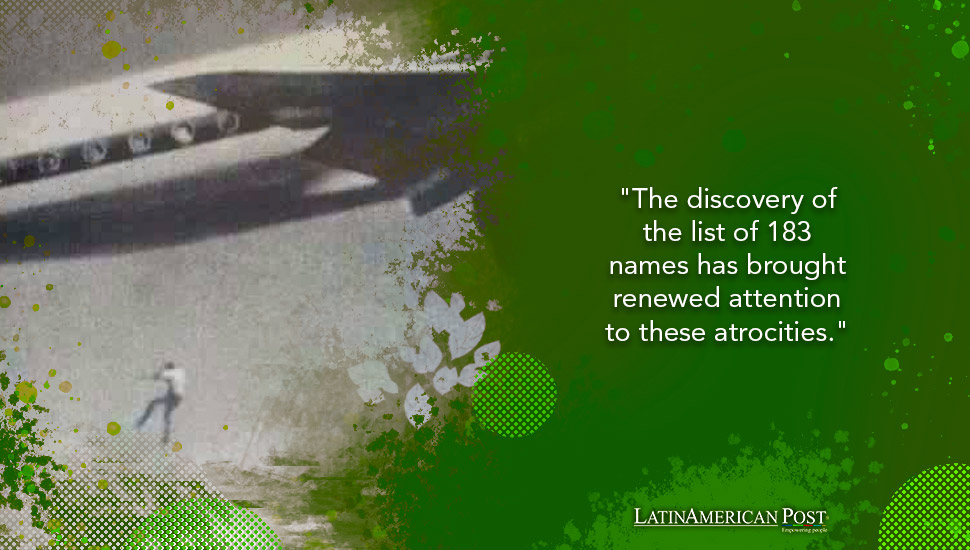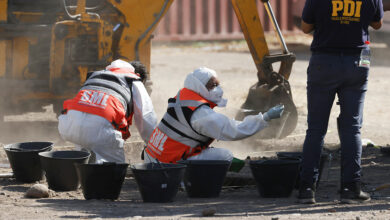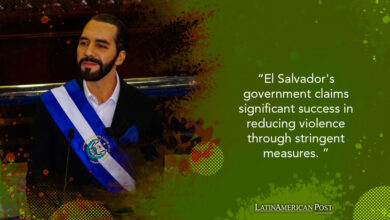The Forgotten Victims of Mexico’s “Death Flights”

The revelation of a list containing 183 names of individuals detained in Mexico between 1972 and 1974, presumed victims of the infamous ‘death flights,’ opens a crucial chapter in understanding the atrocities of the Dirty War, a dark period of state violence and repression.
Mexico’s Dirty War, a period marked by state-sanctioned violence and repression against political dissidents during the 1970s and early 1980s, remains a haunting chapter in the nation’s history. Recently, this grim period has returned to the spotlight with the disclosure of a list containing the names of 183 individuals who were detained between 1972 and 1974 and are believed to have been victims of the so-called “death flights.” These flights, conducted by the Mexican military, allegedly involved throwing prisoners—students, activists, and suspected dissidents—into the sea from aircraft, particularly along the coast of Guerrero, leaving behind no trace of their existence.
The Dirty War (Guerra Sucia) in Mexico, though less internationally known than similar periods of repression in Argentina or Chile, was a time of intense political violence. The Mexican government, driven by a fear of communist influence and insurgent activity, unleashed a campaign of terror against those it perceived as threats. During this era, the state’s security apparatus engaged in forced disappearances, extrajudicial killings, and widespread torture. Entire families were torn apart as students, labor leaders, campesinos, and even ordinary citizens with suspected leftist ties were targeted.
The discovery of the list of 183 names, made public through investigative journalism and human rights organizations, has brought renewed attention to these atrocities. According to the National Human Rights Commission (CNDH), this list provides a significant opportunity to delve deeper into one of the Dirty War’s most critical and harrowing episodes. The commission, along with other human rights groups, has been actively working to uncover the truth behind these disappearances, ensuring that the memories of these victims are not lost to history.
The Death Flights: A Chilling Tactic
The term ‘death flights’ (vuelos de la muerte) is fraught with horror, conjuring images of state-sanctioned murder carried out with chilling efficiency. This method of extrajudicial execution, reportedly used by military regimes in various parts of Latin America, involved the systematic elimination of perceived enemies of the state by throwing them, often drugged or unconscious, from airplanes into bodies of water or remote areas.
In Mexico, these flights are believed to have taken place primarily in the early 1970s, targeting individuals deemed a threat to national security. The recent revelations, including the 183 names, underscore how much the Mexican state went to silence dissent. The coastal region of Guerrero, a hotbed of guerrilla activity and resistance against the central government, was a focal point for these brutal tactics. The exact number of victims remains unknown, but the disclosure of these names offers a stark reminder of the human cost of political repression.
The CNDH has played a pivotal role in investigating these historical abuses. In its recent statement, the commission highlighted that the list of names has been integrated into the body of Recommendation 98VG/2023, a document that addresses human rights violations during the Dirty War. The CNDH has kept this recommendation open, reflecting the magnitude of the violations and the ongoing need to clarify this period.
The commission’s investigation is part of a broader effort to confront Mexico’s past, acknowledging the state’s role in perpetrating violence against its citizens. The CNDH’s call to the Mexican government to provide certainty to the victims’ families is crucial. Many families have spent decades searching for answers, hoping to learn the fate of their loved ones. The CNDH insists that information related to these crimes must be handled with the utmost care, in collaboration with the victims’ families, to ensure the right to truth and justice.
Supporting the CNDH’s efforts are organizations like Centro PRODH, Fundar, Centro de Análisis e Investigación, and Artículo 19 have been instrumental in verifying the authenticity of the recently released document. According to various official and unofficial records, these groups have confirmed that at least 160 of the names on the list match those of individuals who were reported as disappeared during the same period. The corroboration of these names with existing reports of disappearances adds a layer of credibility to the claims and highlights the need for a thorough investigation.
The struggle to uncover the whole truth of Mexico’s Dirty War has been long and arduous. For years, the Mexican government maintained a policy of denial and obfuscation regarding its actions during this period. It wasn’t until the early 2000s that significant efforts were made to investigate these crimes, leading to the establishment of the Special Prosecutor’s Office for Social and Political Movements of the Past (Femospp). However, despite these efforts, justice has been slow, and many cases remain unresolved.
The recent revelations concerning the 183 individuals believed to have been victims of the death flights represent a critical step in this ongoing process. By bringing these names to light, human rights organizations hope to renew pressure on the government to acknowledge its past actions fully and to provide the victims’ families with the closure they desperately seek.
The CNDH’s open recommendation and ongoing investigations underscore the importance of confronting historical injustices head-on. For the families of the disappeared, this is not just a matter of historical record but a deeply personal quest for truth and accountability. Each name on the list represents a life cut short, a family left in limbo, and a society still grappling with the legacy of state violence.
A Call for Accountability
The path to justice for the victims of Mexico’s Dirty War remains fraught with challenges. The Mexican government’s willingness to fully engage with this dark chapter of its history will be critical in determining whether these recent revelations lead to meaningful change. The CNDH’s call for a careful and collaborative approach to handling this information reflects the delicate nature of the task at hand.
As Mexico continues to wrestle with its past, the role of civil society and human rights organizations will be essential. These groups have shown that even decades after the fact, it is possible to uncover the truth and hold those responsible to account. The release of the list of 183 names is a powerful reminder that the fight for justice is far from over and that the victims of the Dirty War deserve to have their stories told and their suffering acknowledged.
The discovery of the 183 names linked to the death flights of Mexico’s Dirty War is a somber reminder of the state’s capacity for violence and repression. Yet, it is also an opportunity—a chance to confront the past with honesty and integrity, to honor the memories of those who were lost, and to ensure that such atrocities are never repeated.
As Mexico reflects on this painful period, the ongoing efforts of the CNDH, Centro PRODH, and other human rights organizations offer a glimmer of hope. By continuing to seek the truth and demand accountability, they are helping to build a future where justice prevails and the lessons of the past are not forgotten.
Also read: Key Latin America Issues for the Next U.S. President to Address
The story of Mexico’s Dirty War is not just a historical account; it is a living narrative that continues to affect the lives of countless individuals and families. The release of the list of 183 names is a critical step in ensuring that the victims are remembered, and that their stories serve as a warning of the dangers of unchecked state power. As Mexico moves forward, it must do so with a commitment to truth, justice, and the preservation of memory.





